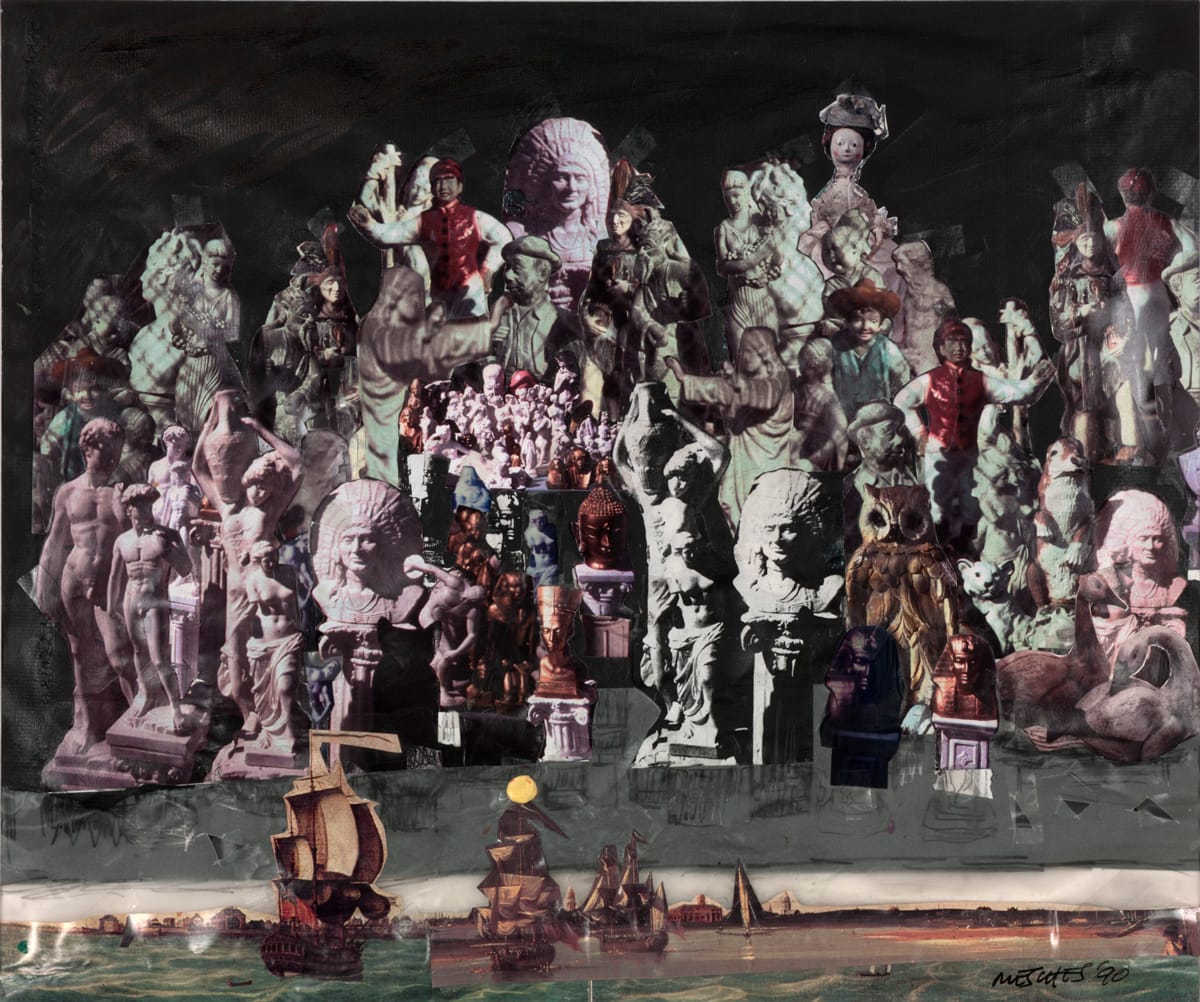Arnold Mesches, born in the Bronx in 1923 and raised in Buffalo, wasn’t simply an artist; he was a chronicler of his times, a provocateur, and a man who transformed 25 years of FBI surveillance into artistic fuel. His journey, spanning from the vibrant art scene of 1940s Los Angeles to the politically charged atmosphere of the Cold War, intertwined creativity with unwavering social activism. Mesches’s courtroom sketches, his provocative “The F.B.I. Files” series, and his broader artistic explorations offer a compelling lens through which to examine 20th and 21st-century America. Delve into the enthralling world of Arnold Mesches, a renowned artist whose captivating style continues to inspire. Explore his mesmerizing paintings that transport you to realms of wonder.
Early Life and Artistic Awakening
Mesches’s upbringing during the Great Depression likely instilled a deep sensitivity to social and economic inequalities, themes that would later permeate his art. His move to Los Angeles in 1943 on an Art Center School scholarship placed him at the epicenter of a burgeoning artistic community, simultaneously exposing him to the escalating political tensions of the Cold War era. This environment probably nurtured his desire to express his political viewpoints through art. In 1945, amidst this climate of suspicion and fear, the FBI opened a file on Mesches, suspecting him of communist activities. This act of surveillance, rather than silencing him, may have inadvertently ignited his artistic fire, shaping his life and inspiring his “FBI Files” series.
The F.B.I. Files: Transforming Surveillance into Art
The FBI’s relentless scrutiny, generating a substantial dossier over 25 years, became the unexpected catalyst for Mesches’s most iconic work. The “F.B.I. Files,” a series of 40 collages, incorporated actual documents from his FBI file, personal letters, newspaper clippings, and potent symbolic imagery. This powerful body of work not only challenged political oppression but also exposed the often-intrusive nature of government oversight. He transformed the tools of surveillance into a weapon of artistic expression, reclaiming his narrative and sparking conversations about freedom of expression and the subtle erosion of civil liberties. Some theorists suggest that the very act of being watched may have amplified Mesches’s creative process, raising questions about the complex relationship between art and surveillance. Mesches’ experience with surveillance also amplified his voice, making him an advocate for civil liberties. His “FBI Files” series juxtaposed personal documents and news clippings to expose the intrusive nature of government surveillance. His art challenged conventional narratives and promoted social justice.
Beyond the Files: A Multifaceted Artistic Vision
Mesches’s artistic contributions extended beyond his political art. He was a skilled courtroom sketch artist, capturing the drama of high-profile trials, including the inquiry into the capture of the USS Pueblo in 1969. His portraits delved into the depths of human character, while his experimentation with mixed media pushed the boundaries of his craft. He was known as an “artist’s artist,” respected by peers for his technical skill and courageous voice. From courtroom sketches to canvases reflecting social unrest, Mesches’ art offers a compelling lens through which to examine 20th and 21st-century America. He explored themes of political oppression, racial inequality, and the struggle for human rights. He became a vocal advocate for social justice and used his art to challenge conventional narratives. Mesches’ work resonated with audiences and sparked conversations about freedom of expression and the human condition. Unveil the timeless masterpiece, Christina’s World, by renowned painter Andrew Wyeth. Witness the poignant tale of Christina Olson as she gazes upon her distant home, evoking a profound sense of longing and solitude.
Activism and Legacy
Mesches’s art wasn’t created in isolation. His active participation in labor unions and anti-war protests directly influenced his artistic themes and subject matter, infusing his work with a gritty, authentic feel. His dedication to social justice, perhaps rooted in his own experiences with economic hardship, propelled him to use his art as a platform for social criticism. He tackled complex issues like racial inequality and human rights abuses, forcing viewers to confront uncomfortable questions about power, surveillance, and the human condition. Mesches’ early experiences with economic hardship and social inequality influenced his artistic themes. The FBI’s surveillance of Mesches shaped his life and inspired his “FBI Files” series.
Mesches’s legacy extends beyond museums and galleries. His work continues to resonate in an era of increasing political polarization and digital surveillance, serving as a potent reminder of the importance of speaking out and the power of art to challenge the status quo. Ongoing research continues to uncover nuances and add layers to our understanding of this complex figure. Some scholars suggest that his early experiences in Hollywood may have influenced his later artistic choices, while others point to the profound impact of his marriage to writer Jill Ciment. His life and art offer a compelling case study of the intersection of art, activism, and government surveillance in Cold War America and beyond. He received numerous awards and grants throughout his career, including the National Endowment of the Arts (1982), Pollock-Krasner Award (2002, 2008), Art Critics of America (2004), and Florida State Individual Grant (2007). Mesches died on November 5, 2016, at the age of 93, leaving behind a body of work that continues to provoke and inspire.











